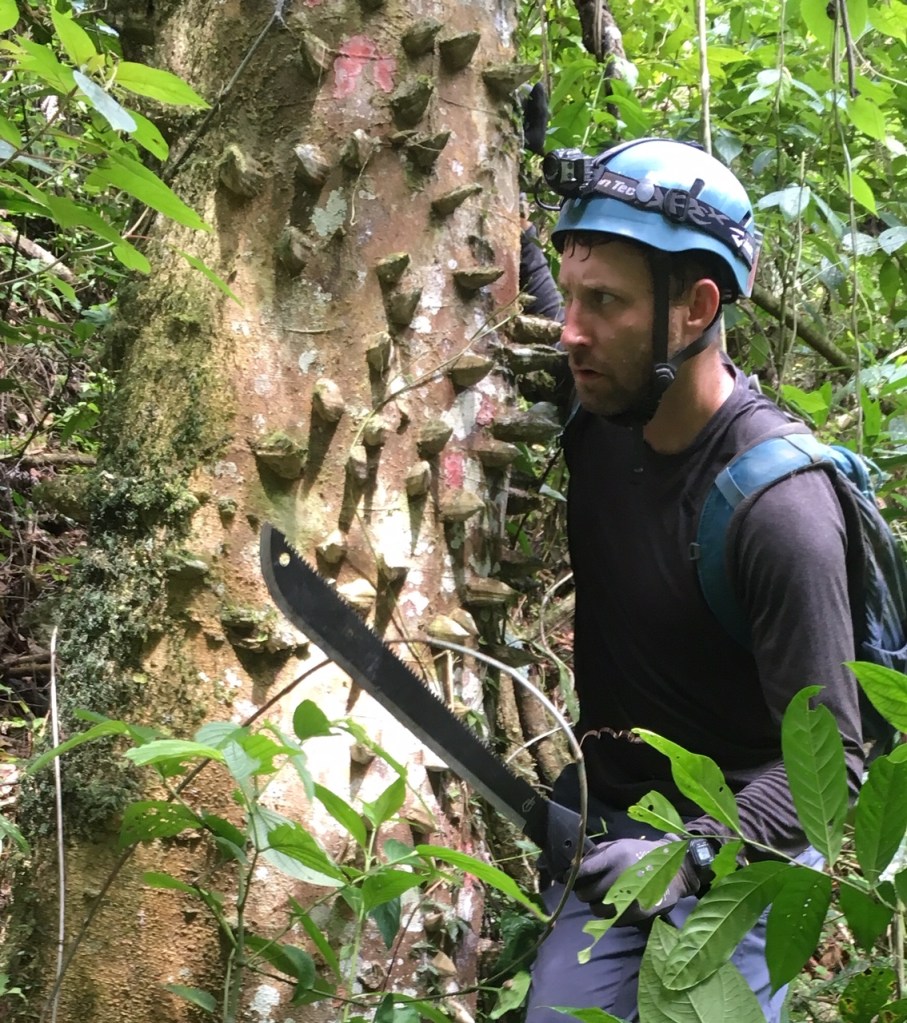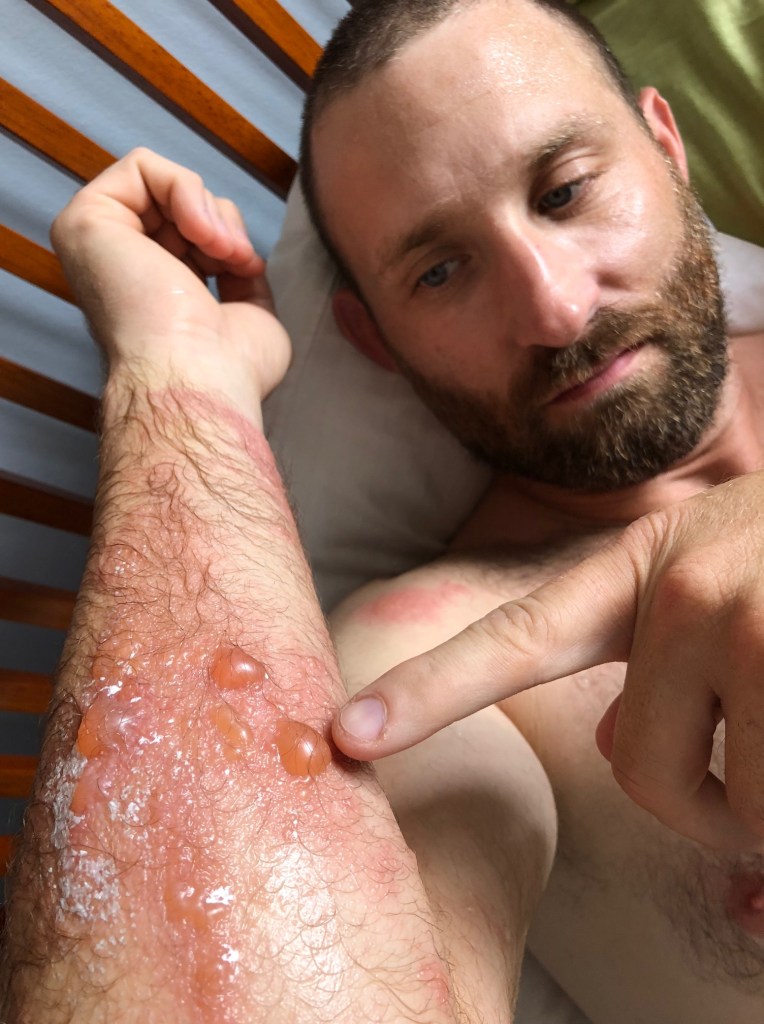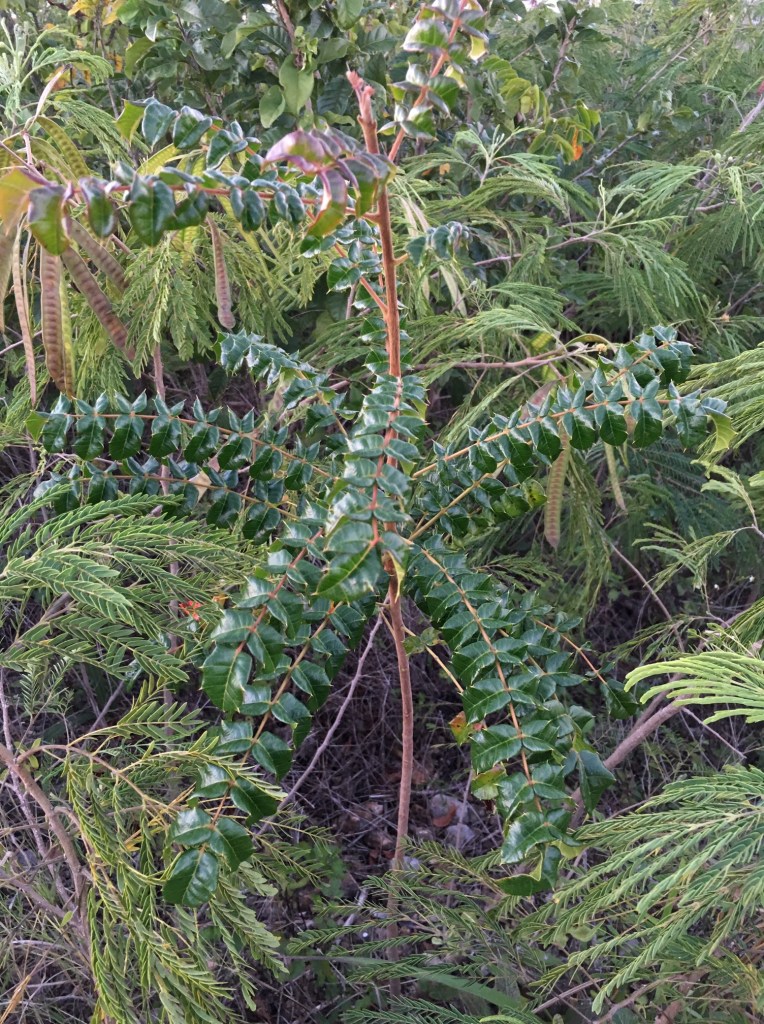
It takes thousands of years for a rainforest to grow a proper canopy. A canopy with leaves so thick, not a single ray of light can penetrate to the forest floor. There is very little bushwacking when walking through primary rainforest, as there is not enough light to support vegetative growth below.
One mile an hour. That’s how fast a person can travel through primary jungle with a healthy canopy. That may sound slow but it’s actually quite fast. Most hikers would have a hard time traveling at two mph on a maintained trail in Colorado.
Puerto Rico’s rainforest got annihilated during Hurricane Maria and the leaves from the jungle canopy were ripped away by winds exceeding 150mph. Suddenly, the understory was exposed to sunlight for the first time in possibly hundreds of years. The foliage underneath began to grow in unison, exponentially, each species competing with another, growing taller, faster, taking up every available inch of real estate. Suddenly, walking through the jungle became a very real challenge. You’d better have a machete and you’d better know your plants––because some of them are quite sinister.

When I first started jungle-bashing (primarily looking for caves) I thought it might be a good idea to see if there was poison ivy in Puerto Rico as I am highly allergic to it. A quick internet search simply produced a ‘No.’ But I wasn’t asking the right questions, you see. I should have asked: What plants in Puerto Rico are worse than poison ivy? Well, I found out the hard way. Here is a list of the worst.
Carrasco (Guao)– This is the worst poisonous plant you will find in Puerto Rico. Its related to poison sumac but its effects are much worse to those who are affected.If you have had reactions to poison ivy or its relatives, beware of this plant! The leaves look like holly– albeit, less festive.


The oil on the leaf is powerful and will react to the skin causing large blisters after 2-3 days of exposure. It can resemble a chemical burn and is extremely itchy.

Making this plant especially nasty are the barbs on the leaf, which can pierce through clothing and inject the skin. If exposed to this plant, be sure to wash thoroughly with soap and water. I have been told that applying rubbing alcohol to the affected areas will neutralize the urushiol in the plant’s sap, although this has not seemed to help me.

Extremely hot showers will intensify the itching but provide some relief once the affected areas are scalded. An over-the-counter antihistamine like Benadryl or Claritin can help reduce the reaction. A steroid shot (like Solu-Medrol) is a last resort although extremely effective. Most doctors on the island will have no knowledge of Carrasco. Apparently jungle-bashing isn’t a popular pastime here. Your best defense against this plant are long sleeves and pants, gloves, thick socks or gaiters. I double layer––which is almost unbearable in the heat––but preferable to three weeks of itching.
Chicharrón (Christmas-Bush, co*cks Spur, Poison Ash)

Often confused with Carrasco, Chicharrón is another poisonous plant similar in appearance to Carrasco, although the leaves are smaller, cupped, and often reddish in color.
The word chicharrón is used for a type of Puerto Rican street food of deep fried pork skin which resembles the wound this plant can inflict. It grows well in dry areas and is common in Guanica State Forest.
Treatment is the same as Carrasco.
Stinging Nettles (Ortiga Brava)

This native plant can grow to 15-feet tall but rarely grows higher than 4-feet. Its broad, green leaves are serrated and warty. Yes, warty. Anything with warts should be avoided––let this be a life lesson. The stinging hairs can be observed on the underside of the leaf. Once they are touched, the pain feels like fire-ant bites. The sting is immediate but doesn’t last more then a few hours. Fortunately, this plant is easily identified and avoided––especially after touching it for the first time.
Sawgrass (Twig-sedge)

This isn’t a poisonous plant but it will kick the crap out of anyone who walks through it. I thought it appropriate to add to the list. As the name implies, it looks like grass yet can be 10-feet tall and is common along river banks. Its leaves are serrated and sharp as a razor. As a kid in Florida, my friend and I were playing in sawgrass of the same species and he cut his leg so badly I could see the subcutaneous fat beneath. Stitches were required.
Pica Pica (Cowhage, Oyo de Venado, Devil Bean)

The Spanish word ‘picar’ or ‘pica’ roughly translates to the word ‘itch’. During the winter months this hearty vine produces seed pods, or beans, which grow a coat of fine, velvet-like hairs. Should you be unfortunate enough to get these hairs on your skin, or are downwind of the plant when it is shedding, the all encompassing ‘itch itch’ will commence. It would be the equivalent of getting fiberglass insulation on your skin. The itching won’t stop until the hairs are removed. This can be down with soap and water. Remember to wash your clothes too.